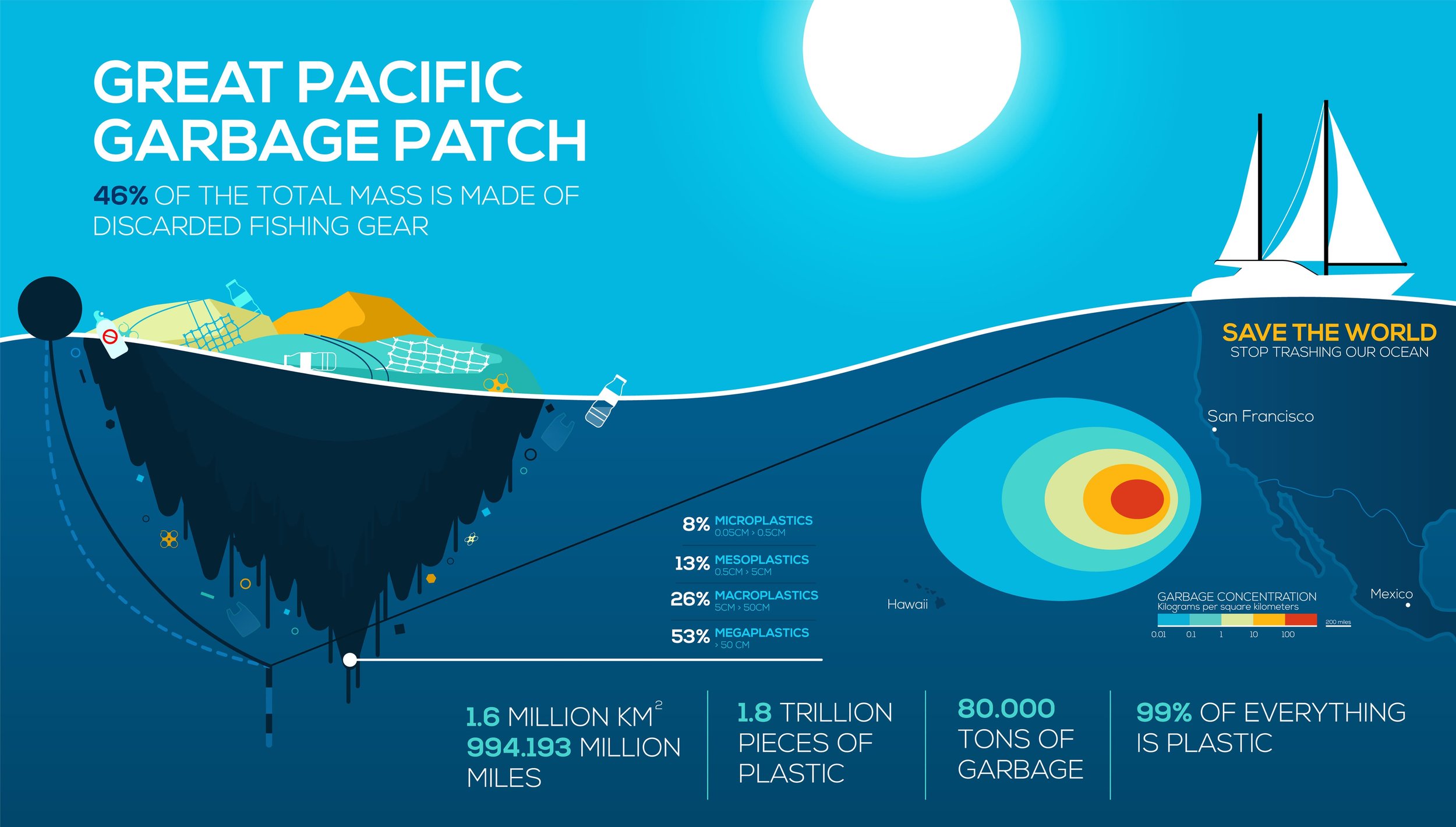Introducing an Innovative Approach To Tackle The Plastic Ocean Pollution
Illustration: Nikolai Jónasson
80% of plastic waste in the world ocean comes from rivers.
It makes sense when you think about it – all of the rivers are flowing towards an ocean and sea, or sometimes to other rivers and lakes. Yes, in some cases they disappear in the ground, but most rivers tend to make their way into big waters. Carrying everything they have gathered along the way.
The Great Pacific Garbage Patch
Don’t be misled by the name, there is nothing positively great about this patch except the size.
The Great Pacific Garbage Patch or Pacific trash vortex is a collection of marine debris in the North Pacific Ocean. The estimated size of range from 700 000 square kilometres to 15,000,000, which is about the size of Russia.
The collection consists of plastics of different sorts. According to the EPA report, the most common items found in the debris are plastic bottles, bags, cigarette filters, food containers, fishing nets, etc.Many of those items are already broken down into microplastic and not as obvious as one would think – even with the satellite you can’t see it properly.
Plastic contains toxic pollutants, adding to that it can absorb and release toxic pollutants around them, which makes it a chemical threat as well.
How microplastic is created?
There are two classifications of microplastic so far – primary microplastics and secondary microplastics. The first one is plastic that is already in size smaller than 5 mm before entering the environment, it includes microfibers, microbeads and pellets. Secondary microplastics are created from the breakage of plastic products when it’s slowly breaking into tinier and tinier pieces.
Plastic marine debris is considered to have great potential to harm the animal and human life. And sadly, humans generated all of it. 80% of plastic originated from on land at marinas, ports, rivers, docks and harbours, and 20% are coming from boats and other marine sources.
If it is hard to see the primary microplastic without special equipment, maybe we can do something with the other type? For example, prevent plastic from going into the big waters before it is degraded into secondary microplastic.
Innovative River Cleaning
This is the thought our partners at River Cleaning, Italy, had. The ambitious idea was to create a system that would intercept plastic pollutants before entering the sea and that had a zero negative impact on the environment.
They succeeded and went beyond!
River Cleaning System is self-powered, autonomous 24/7, allows navigability, has zero negative impact on the environment and fulfils its purpose of intercepting waste in full efficiency and safety. The devices intercept most of the floating debris, such as disposable plastics and packaging, preventing it from entering the seas.
The system is designed in a way to require the least possible maintenance and doesn’t need constant supervision.
How You can help
Fighting plastic in the rivers will save countless marine animals and will certainly positively affect human life as well. Let’s not waste our chance for a better life
Pro-environmental mindset is a key value in a Caddybooers’ heart and we are proud to name River Cleaning as our partner.
We are thrilled to support visionaries who created an innovative preventive approach for global water pollution. They set a great example of a small company bringing real environmental change to our planet. The company is also serious about growth – they are developing a new oil capturing system that intercepts not only plastic waste but also oil and cleans up rivers around the world.
The awareness of the situation is a great start for changing things. There are several ways you can support River Cleaning:







